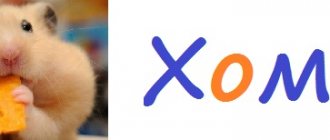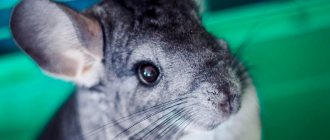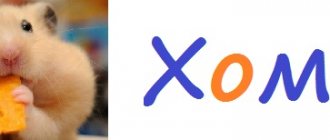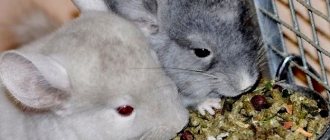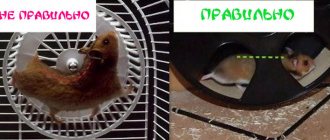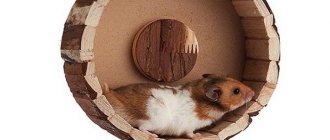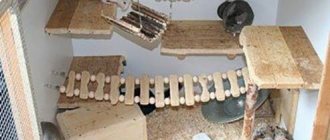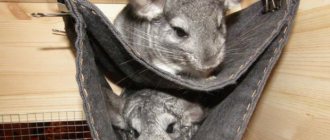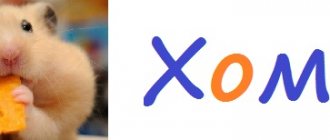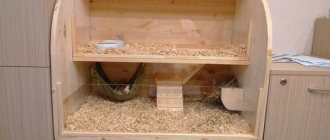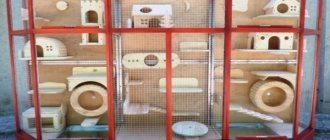If a cute animal called a chinchilla appears in your home, then you simply must provide it with comfortable living conditions. These animals need to be equipped with a comfortable home so that they have a place to rest; there should also be an area where they can eat and an entertainment area. This fluffy animal is a very active animal, so they do not like being in a cramped cage where there is no room for movement. An inactive lifestyle can have a negative impact on your well-being. For this rodent, it is very important that there is a running wheel in the cage. You can purchase such a necessary simulator at a specialized store, or you can build it with your own hands. In this article, let's look at how you can build a wheel for a chinchilla yourself.
Selecting a running wheel
In stores you can find a large selection of running wheels for chinchillas. They differ in price, color, material and manufacturer. The most common models are made of wood, plastic or metal. However, you can find both ceramic models and models made of plexiglass.
When choosing a wheel for your pet, you should pay special attention to the safety of the toy.
Regardless of the material, the wheel should not have any sharp edges or protruding parts, no traces of paint, no cracks or chips. You should also be careful when choosing the size. It is recommended for an adult chinchilla to buy wheels with a diameter of at least forty centimeters. For young animals, a smaller size is suitable - thirty or thirty-two centimeters.
The most convenient and practical are plastic wheels. They are stronger, more durable, and easier to clean. Plastic does not look attractive to the animal, so chinchillas usually do not chew it. However, most often plastic wheels are produced with a small diameter or are quite expensive.
A good alternative to plastic is metal. Metal wheels are available in two models:
- With mesh,
- With horizontal bars.
Many owners prefer the option with crossbars. The animal's paws can get stuck in the mesh, which can lead to injury. A wheel model with crossbars can also sometimes cause injury, so it is recommended to cover the wheel with thick denim fabric.
Wooden wheels most often have a small diameter and are suitable for young animals.
The downside is that the animals will gnaw the wooden parts and the toy will quickly become unusable.
What should the wheel size be?
When choosing the size of a running toy, you need to start from the size of the chinchilla itself. The larger the chinchilla, the larger the toy for it.
Usually wheels with a diameter of 32 centimeters are taken. A smaller size causes the chinchilla to bend and stumble when running. This leads to injuries: fractures and dislocations.
A large wheel will also be of little use - the chinchilla will not be able to accelerate it enough and in the end, will stop using it. The pet should be comfortable using the toy purchased/made for it.
Making a running wheel
You can make a toy for your pet yourself. Typically, homemade models are made of wood: the material is environmentally friendly, affordable and allows you to make a wheel of the required size. Even taking into account the fact that the animals will gnaw the wood, this version of the wheel is in many ways more economical than buying it. If desired, you can sheathe the outside of the wooden case with metal - this will extend the life of the running wheel.
For production you need:
- A sheet of plywood, no more than a centimeter thick,
- Electric jigsaw,
- Drill,
- Bearing or tensioner for an engine from any car,
- Self-tapping screws,
- Screws,
- Bolt,
- Small planks, three centimeters wide and about fifteen centimeters long.
In order to cut an even circle, first cut a small hole in the center of the plywood sheet with a jigsaw. The required radius is measured from its center. The jigsaw is bolted to the table through the hole made. During cutting, the plywood is rotated around its axis along the intended circle. The result is an even circle of the required diameter.
Next, you should cut out a ring with a similar outer diameter. The planks are fastened inside the wooden ring with thin self-tapping screws. You should first drill the holes with a drill and a 1.5 mm drill bit - this will protect against cracking. The ring is attached to the outside of the resulting plywood circle to give greater strength.
The next step is the rotation unit and fastening. For fastening, a bolt of at least fifteen centimeters long is used. A steel washer with a diameter larger than the bolt is placed on the bolt (so that it does not press into the plywood). The bolt is inserted inside the resulting structure and secured on the outside with a similar washer. A tensioner is put on the bolt and secured with self-tapping screws to a wooden plank. Advantage - the plastic tensioner cage does not produce noise when rotating. The toy is ready!
There are two ways to install a toy in a cage. The entire structure can be attached to a wooden plank or plank using one or two self-tapping screws and installed on the floor of the cage. The board should be wide enough - at least 10 cm. Otherwise, the animal will easily turn the toy over. In the second method, the bar to which the tensioner is screwed is secured with wire to the cage wall. This option is more convenient - the toy is attached more securely and even very active rodents cannot turn it over or move it.
Hammock design
The design of a hammock for a chinchilla is simple. In the classic version, this is a piece of durable but pleasant-to-touch material, the corners of which are securely attached to the cage bars using carabiners or other fasteners.
Fabric structures differ favorably from other types in that they take a shape that matches the contours of the animal’s body, thereby providing maximum convenience and comfort. But if the animal gnaws its bed, you should choose other - more durable - materials.
As for the types of construction, there are two main types:
- single-tier (simple flat bed);
- two-tier or pipe-shaped (a volumetric hammock - the animal can be placed both on top and inside; climbing to the lower tier, the animal finds itself in a “house” - reliable and warm).
LiveInternetLiveInternet
—Categories
- delicious recipes (50)
- beauty recipe (36)
- about programs (26)
- NEWS (12)
- the most interesting things to note (10)
- crafts (9)
- interesting designs (9)
- WORK (7)
- health (6)
- business (6)
- video (5)
- rest (4)
- embroidery patterns (2)
- loans (2)
- carpet embroidery (1)
- music (1)
- funny photos (0)
- PATTERNS (0)
- sewing (17)
-Music
—Search by diary
—Subscription by e-mail
—Interests
— Regular readers
-Statistics
How to make a running wheel for chinchillas.
It often happens that the size of the display case for your pet is too small for jogging.
And since your pet needs to move a lot in order to develop properly, in order to shed excess energy, a running wheel will be an indispensable assistant for this. To begin, use a jigsaw to cut out a circle 30-40 cm in diameter from thick plywood (8-12 mm) and a ring of the same outer diameter. The biggest problem is the difficulty of cutting out a perfectly even circle and, accordingly, making a hole in the center. You can solve this problem as follows: We fix the jigsaw on the back of the table, having first made a hole for the file.
Then we measure the required radius and bolt the plywood to the table.
Turn on the jigsaw and begin to rotate the plywood around the axis.
The need for a wheel for a chinchilla
Often, when purchasing a house for our pet, complete with a running wheel, we do not think about the importance of the latter. The anatomical features of the animals suggest short front and developed hind legs, with the help of which they move by jumping. To practice jumping and prevent muscle atrophy, the chinchilla needs to engage in physical exercise all the time. In the limited space of the cage it is not possible to perform a full warm-up, so the owner must take care of the necessary toys for running. Ladders, shelves, labyrinths and running wheels are installed as exercise equipment in rodents' homes.
Clothing, leashes and harnesses for chinchillas
The accessories for chinchillas presented in stores today are so diverse that they confuse breeders. The most controversial product is the leash with harness. It is strictly forbidden to walk chinchillas on the street. And there are several reasons for this:
- Chinchilla fur is easily damaged by any harness or collar,
- Chinchillas don't walk - they move by jumping. A collar can break your spine, a harness can break your ribs,
- There are quite a lot of dangerous bacteria, microbes, fungi,
- A sudden change of environment, new smells and sounds, bright light - all this will lead to very strong stress and can provoke a heart attack.
- A chinchilla is usually walked at home, but for home walks a harness and leash are not needed.
- In the same way, leashes and harnesses are not needed for exhibitions - the animal is placed from the carrier into the exhibition box.
Products for chinchillas include a variety of clothes: vests, jackets, shorts, overalls and dresses. There is no need to talk about the actual use of such accessories: you cannot leave an animal in clothes in a cage - in a few minutes the pet will chew everything it can reach and also get poisoned by the dyed fabric. At exhibitions, animals also do not need additional decorations. The downside is that the chinchilla is a freedom-loving animal, and it can be very difficult to persuade the animal to wear clothing that restricts movement.
Criteria for choosing a wheel for a chinchilla
Any animal has its own characteristics, character, habits and preferences. When choosing a trainer for your pet, take this into account and choose the right accessory. Despite the fact that almost all rodents love to run in a wheel, there are also animals that are indifferent to it. But if your furry friend is a fan of outdoor activities, before purchasing, read some criteria for selecting and using an accessory:
- carefully select the design of the wheel, because not all products are safe for the animal;
- The wheel size for a chinchilla should correspond to the dimensions of the animal. For medium-sized individuals, a diameter of 32-34 cm is sufficient, but for larger animals a wheel diameter of no less than 40 cm is needed;
- The material used to make the wheel is an important factor. Plastic products are considered the highest quality and safest. The only “but” is that there are no suitable wheel sizes for large animals. Their average diameter is 30-32 cm. Wheels with metal holes can be hazardous. Some individuals make toilets in wooden wheels or chew on them. But that's not the saddest part. If such paraphernalia is available for sale, it will be very expensive. There is an option to order a wheel from a craftsman or make a toy with your own hands;
- Safe fastening and placement in the cage. This rule applies not to the running chinchilla, but to the one that is outside the wheel. It is better that the product is attached to the wall of the cage rather than placed on a stand.
The wheel must correspond to the dimensions of the chinchilla
Don't limit yourself to buying just a running wheel. A ladder, crossbars, bridges will not be superfluous for your fluffy and will diversify his exercise.
Plastic wheels
Such products have many positive aspects:
- animals do not chew them;
- the simulator is small in size;
- they are very easy to wash and disinfect;
- These wheels are cheap. Exercise machines for baby chinchillas can cost even less than 500 rubles, but prices for products for adults are also affordable.
Commercially available plastic wheels can be of two types - finely knurled and parallel crossbars. When choosing the latter, it is worth considering that they may be unsafe for animals. A chinchilla can seriously injure its paw if it steps between the bars.
Making a wheel for a chinchilla with your own hands
If you can’t find a suitable running wheel for a chinchilla in stores, you can try making one yourself. This will allow you to save on the cost of a specialist and make a simulator suitable for the individual characteristics of your pet. Wood is used for this. This is an environmentally friendly material and even if a chinchilla chews it, it will not cause harm to its health. An alternative is to make a wheel from a scrap aluminum pan. The process is labor-intensive, but if you have at least a little knowledge of metal cutting, then everything will work out. Let's take a closer look at how to make a simulator out of wood and a pot.
Making a wooden wheel for chinchillas
For materials and tools for a wooden wheel you will need:
- plywood sheet;
- drill;
- jigsaw with wood saw;
- compass and ruler;
- self-tapping screws and bolt;
- wooden planks 3x15 cm.
To make a wheel for a chinchilla you will need a sheet of plywood.
Stages of work execution.
- A small hole is cut out on a sheet of plywood using a jigsaw. From its center, using a compass, draw a circle of the required diameter.
- The jigsaw is bolted to the table through the hole made. By turning the plywood, a cut is made along the intended contour. At the end you should get an even circle of the required size.
- A ring with a diameter similar to the circle is cut out.
- Wooden planks are screwed to the inside of the ring using thin screws, the ring is attached to the outside of the plywood circle using a bolt.
- The bolt should be 12-15 cm long. A steel washer of larger diameter is placed on it. The bolt is inserted inside the wheel and secured on the outside with the same washer.
- The tensioner placed on the bolt is attached with self-tapping screws to a wooden strip.
- The finished structure is attached to the cage wall using self-tapping screws.
Drawings and dimensions of a display case for polygamous housing
I hope that you already have an understanding of what kind of cage is needed for your cheerful animal. Now we need to move further along the path of creation.
To do this, you need to depict the future product on paper or on a monitor screen. At a minimum, you should decide on the dimensions and basic design solutions.
It is also necessary to consider the internal contents of the cell. Moreover, even a basic drawing or sketch will greatly facilitate the preparation of the necessary materials, not to mention the assembly of the product.
Desires will materialize, and your design will definitely turn into a natural product. The dimensions shown in the drawings will help you make the right choice. There is no point in providing a list of necessary materials and tools without having a practical project. The information provided is enough for an experienced home craftsman to make the best cage for his animal.
Methods for installing a wheel in a cage
There are two ways to install running toys in a cage. The wooden structure can be secured to a wooden plank or plank using one or two self-tapping screws and placed on the floor of the cage. The disadvantage of this installation method is that if the board is too narrow, the animal will easily turn over its simulator. On average, the bar should be 10-15 cm wide.
The second installation method involves a tensioner screwed onto the bar. The structure is secured with wire to the cage wall. This option is more convenient, because The running wheel for a chinchilla is attached more securely and even very active rodents cannot turn it over or move it.
When buying a pet for your home, remember that caring for the pet and its health is your responsibility. A happy animal will become a great friend for your family members.
Prevention and care of the house
To protect your pet, the installation of the house is carried out with an eye to prevention:
- the dwelling must be tightly attached to the wall or mesh;
- Careful adjustment of the surfaces is important (no gaps where a curious animal would immediately stick its paw);
- various chips and cracks are excluded;
- It is extremely undesirable to use traumatic fasteners - iron screws or self-tapping screws.
Home maintenance is quite simple.
Video: how to clean a chinchilla’s display case It is enough to promptly remove the remains of food that has got there and the old layer of sawdust from the house. To do this, the structure is simply raised.
It is advisable to wipe the walls with the same frequency (once a week) with a slightly damp cloth.
Major disinfection is carried out every 2-3 months. All surfaces of the house are wiped with swabs soaked in an alcohol solution of salicylic acid (concentration 1 or 2%). But there is one caveat - before use it is mixed with boiled water in equal parts.
Primary requirements
The main thing is that the simulator is of high quality and safe. Therefore, before making a running wheel for a chinchilla, you need to study the following requirements:
- The presence of chips, cracks and sharp edges on the wheel parts is unacceptable.
- The toy should be light.
- It is better to attach the wheel to the cage.
- The material, if the accessory is made of wood, must first be cleaned of paint and varnish, and then sanded. This way it will be possible to eliminate chips and other defective areas.
A properly designed running wheel has the following advantages:
- low noise during use;
- a light weight;
- no vibration;
- the presence of reliable fastenings and internal serifs.
Information about the animal
The homeland of short-tailed and long-tailed chinchillas is South America. These animals live in the Andes mountains, at an altitude of 500 to 5000 meters above sea level. They use cracks in rocks as homes, and where there are none, they dig holes. Chinchillas can live up to 20 years, but are often victims of predators. The irrepressible energy of the animals helps them survive in the harsh conditions of the Andes.
Domestic chinchillas are just as fussy as their mountain relatives. Animals' paws are capable of making long jumps; animals need active running. Blood stagnation caused by a passive lifestyle in a cramped cage can lead to muscle atrophy in the hind limbs. Therefore, the wheel is not only an entertaining element, but also solves serious problems of preventing various ailments.
Hard drive toy
Before you develop your own chinchilla wheel from the mentioned item, you need to prepare the following materials and tools:
- wide and light tin container;
- upholstery material (for example, cotton fabric or cork mat);
- electrical tape;
- hot glue;
- wire or nylon ties;
- screwdriver;
- scissors for cutting metal;
- marker.
If there is no damaged or old hard drive, this part can be replaced with the motor from the drive.
Assembling a running wheel from a hard drive
To make a toy, you need to follow these steps:
- Remove the screws and remove the cover from the hard drive. The main thing is not to forget about the screw hidden under the label.
- Remove all screws holding the mirror plate.
- Remove the spindle - the motor that makes the mirror disks rotate. This part is attached to the device with three screws, so you need to unscrew them first to disconnect it from the frame.
- Trim off excess tin. To complete this step, you need to draw a circle of the required diameter on the material with a marker.
- Using scissors, cut out a tin container along the marked lines. Do not forget about safety precautions: you need to wear protective gloves on your hands, since you can get hurt when performing this work.
- Sand the sharpened edges of the prepared part.
- Mark the center of the container.
- Mark the location of the spindle, and then secure the part with hot glue. Check the alignment this way: take the installed element of the future treadmill and spin the wheel. In this case, there should be no unbalanced movement or jerking.
- Cover the inner walls of the tin container with a protective covering (for example, a cork mat).
- Secure the upholstery with tape or glue. It is better to use the first consumable, since it is easier to remove if you need to replace the damaged coating.
- Secure the toy to the cage with nylon ties or wire.
How to make a plastic wheel: step-by-step instructions
The body of the toy can be made from plastic objects. In this case, you will need a round box for storing disks (for 50 pieces) and an expansion dowel with a straight hook. The tools you need to prepare are an awl, a drill, sandpaper and a jigsaw. To make your own chinchilla wheel from these materials, you need to follow this method:
- Measure a distance of 5 cm from the top on the plastic box.
- Draw an even line around the circumference of the container with a marker.
- Use a jigsaw to cut the box along the marked line.
- Make a hole in the center of the container. A drill equipped with a 6mm drill bit will come in handy at this stage.
- Use an awl to make small holes around the entire circumference of the box, the distance between which should be about 5 mm. The main condition is that the punctures must be made from the outside of the container.
- Use sandpaper to smooth out roughness and eliminate irregularities.
- Insert the dowel into the central hole made earlier.
- Secure the finished running structure to the cage wall with ties.
Running wheel from a pan: manufacturing technique
This option is a simple and quick method that will allow you to make your own chinchilla attraction. In this case, you will need an aluminum pan. The width of the planned wheel is 15–17 cm, so half the height of the container will have to be cut off with a hacksaw. To prevent the animal from being injured by sharp edges and hangnails, they need to be sanded with sandpaper.
When the preparatory work is completed, you need to make a hole with a diameter of 30–50 mm in the middle of the aluminum circle (bottom of the pan). Then you need to insert a bolt of a suitable size into it and install a tensioner roller or bearing. It is advisable to insert a mesh wheel inside the resulting running wheel. The result is an excellent training device for your chinchilla. In the photo, the homemade product looks quite presentable (the photo is shown below).
Cardboard wheel: manufacturing instructions
To decorate a chinchilla’s house with this item, you first need to prepare:
- corrugated cardboard of sufficient density;
- thin sleeve;
- scissors, stationery knife and ruler.
Before you begin assembling the toy, you need to prepare its parts. First, cut out two identical circles from cardboard. On one of the pieces you need to cut wide holes through which the chinchilla will enter the running wheel. The next step is to use a knife to make small rectangular slits along the entire circumference, retreating 5 mm from the edges. Then you need to cut out the base and the wall, and then make a path. When creating the last part, remember: it is necessary to make special protrusions on each side, the size of which must coincide with the dimensions of the rectangular holes.
To assemble a chinchilla wheel from prepared cardboard pieces with your own hands, you need to follow this plan:
- Secure the track between the circles so that its protruding parts fit into the rectangular holes.
- Make a slot in the wall and attach the base to the resulting part.
- Insert the metal sleeve into the hole.
- Place the wheel on the hub.
- Place jumpers on both sides that will prevent the toy from falling off.
The advantages of this simulator are simple production and low price. However, a chinchilla can chew cardboard, so you need to monitor the condition of the product so that it does not break during use.
Hay
Hay is a versatile product that can be used not only as filler, but also as food. It has a pleasant aroma and natural composition.
Beast Moe meadow hay 0.6 kg/20 l
The product is made from dried meadow hay. The composition also includes field grasses, which are used as bedding. If necessary, hay can be used as feed. In this case, the product will saturate the pet’s body with useful substances, vitamins and other beneficial components.
The main benefit of hay is that it strengthens the immune system. In addition, the product gives the coat a natural look and healthy shine. Suitable for guinea pigs, reptiles, birds, rabbits, degas and chinchillas. The hay is stored in a secure package, which is secured with a metal clip. The filler is well compressed, so the pack contains only meadow herbs.
Advantages:
- environmentally friendly composition;
- pleasant smell of meadow herbs;
- the hay is cleared of dust;
- does not cause allergies;
- reliable packaging;
- economical consumption;
- good value for money;
- no fragrance;
- the hay is well compacted.
Flaws:
- does not absorb moisture well;
- sometimes there is dust in the composition;
- quality varies between batches;
- small variety of herbs.
Customer Reviews
Vitakraft VITA VERDE meadow hay with dandelion flowers 0.5 kg
The product is high in fiber. The hay contains dandelion flowers, timothy and meadow grasses. In addition, hay is low in calcium. Thanks to this, the product is not only tasty, but also healthy for your pet. Hay promotes optimal digestion and prevents abrasion of the incisors.
The filler also contains minerals, vitamins, micro- and macroelements. Thanks to this, your pet's immunity will increase. For hay, grasses that are subject to gentle drying are used. This provides healthy and natural nutrition.
But the main purpose of hay is as a filler. The product absorbs moisture well and masks unpleasant odors. In addition, hay is used economically.
Advantages:
- the hay is well compacted;
- pleasant aroma of meadow flowers and herbs;
- no fragrance;
- does not cause allergies;
- environmentally friendly composition;
- tight packaging;
- good value for money;
- economical consumption.
Flaws:
- sometimes there is dust in the composition;
- small variety of herbs.
Customer Reviews
Making a wheel from plywood and wood
To create a simulator from the specified materials, you need to prepare:
- plywood sheet 10 mm thick;
- small planks, the length of which should be 15 cm and the width - 3 cm;
- bearing;
- screws;
- 15 cm bolt;
- drill;
- jigsaw;
- compass and ruler.
To make a chinchilla wheel with your own hands, you need to follow these simple steps:
- Use a jigsaw to cut a small hole in the center of the plywood sheet.
- Using a compass, measure the required diameter of the future wheel from the resulting slot. This figure should be 32–34 cm.
- Using a jigsaw, cut a circle along the marked contour.
- Make a ring with the same diameter. A compass and ruler will come in handy at this stage.
- Drill holes in the boards with a diameter of no more than 1.5 mm. Thanks to such actions, the material will be protected from cracking.
- Secure the planks with thin screws to the outer part of the circle and ring.
- Place a steel washer on the 15 cm hex bolt, the diameter of which should be larger than that of the fastener. This must be done so that it does not press into the plywood.
- Insert the bolt into the hole made in the first step, so that its head is inside the structure and the thread is on the outside of the wheel.
- Place a similar washer and rubber bearing on the outer part of the bolt. Thanks to the last detail, the wheel will glide smoothly, so there will be no friction against the cage wall during movement.
- Secure the bearing with screws to the bar, the purpose of which is to act as a holder.
If the structure tips over, then it must be secured to the cage wall with nylon ties.
Which material is preferable
The design for active leisure can be made of different materials. When choosing which material to choose, you need to take into account environmental friendliness and safety.
There are basic materials, products from which are most often found in stores.
Plastic
Plastic is the material from which everything is made. Including wheels for pet rodents. Plastic wheels are durable, durable when fastened correctly, and do not absorb moisture.
The problem with choosing a plastic toy will arise only at the stage of selecting the size. Most often, plastic wheels are purchased for hamsters, and manufacturers deliberately make these designs too small for a larger rodent. It is almost impossible to find a product larger than 32 centimeters in diameter.
Thus, plastic is suitable for cubs, or small and light chinchillas; for large ones you will have to choose something larger.
Metal
The metal is famous for its strength and durability. For toys, metal is used that does not corrode.
But metal has a significant disadvantage - such wheels are dangerous. Their bottom is often made of mesh. While running, a chinchilla in a wheel runs the risk of becoming trapped, because its nail or finger can easily get stuck in the net.
You can get rid of the risk of injury by covering the bottom with thick fabric. However, this will not save you from injury if there is more than one rodent in the cage. One of them will certainly try to stick his head into the toy while the other is running. This happens if there is a wheel made of any material, however, there is no escape from a metal one - the material is quite heavy, and during rotational action it will certainly cause injury.
In addition, metal structures are quite unstable.
You can choose aluminum options that are attached to one of the walls of the cage/enclosure. There will be a problem with selecting the size, but you will not need to install an additional stand.
Tree
The wooden wheel option can be called ideal. The only disadvantage of wood is its ability to absorb moisture and odors. Getting rid of dirt on such structures will be problematic, if not impossible.
You can get rid of this problem by coating the surface of the toy with varnish. But the varnish tends to peel off, and it can get into your pet’s food. The consequences will be negative and this will not have a positive effect on the health of the rodent, so you should either put up with the smell and dirt or replace the toy often.
But there is also a significant advantage that makes wood an ideal material. It will be easy to find a toy of the right size. In each workshop you can order a toy of the required dimensions. Wheels made of wood are also quite stable and do not have a mesh or lattice bottom.
Additional recommendations
There are some useful tips:
- the attraction must be kept in a cage at all times;
- if the running wheel begins to creak, it must be lubricated with oil;
- It is necessary to wash the exercise machine at least twice a month.
In addition, it is advisable to put additional accessories in the chinchilla's cage. This could be a treadmill, a walking ball and various hanging toys.
Alternative moving toys
Naturally, wheels are not the only toy for physical leisure. There are other variations of objects that encourage running.
Treadmills
A treadmill or treadmill is an option for animals that do not fit inside the wheel. The design of this toy is similar to a wheel, however, it lies on a horizontal plane.
They are attached stably, at a slight angle, so that it is realistic to run along the surface of the circle. It is possible to find models made of plastic or aluminum.
Hanging toys
Hanging toys are a great option for leisure time! You can’t go wrong with them, because you don’t need to select the size relative to the animal. That’s why you can even buy them in an online store.
There are different variations - all kinds of balls, marbles, ladders. The only drawback of such entertainment is excessive noise. Noisy items are removed at night.
walking ball
Such a toy is classified as an extreme device. It is a hollow sphere, often made of plastic. The pet is placed inside, and the rodent can safely “roll” around the house.
These toys are not used in everyday life due to problematic air circulation from outside to inside. The pet is not left inside for a long time so as not to cause suffocation.
